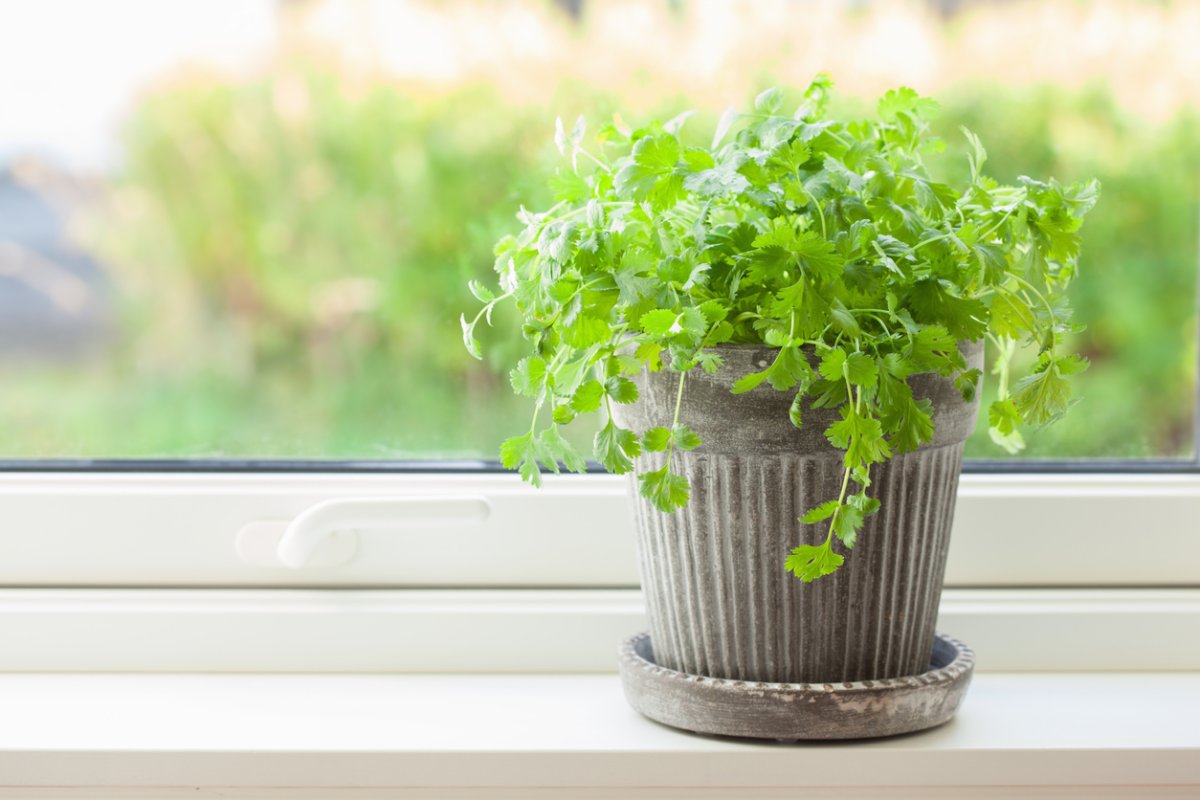We may earn revenue from the products available on this page and participate in affiliate programs. Learn More ›
Anyone with a greenish thumb and a taste for fresh herbs should try their hand at growing cilantro. The entire plant—from seed to sprout, leaf, and flower—is edible. Cilantro is tasty as a microgreen, or you can let it grow to maturity for a pungent harvest. And for many gardeners, the herb grows better indoors than out. So if you’re looking for a good candidate to plant in your window herb garden, consider cilantro. Coming up, learn how to grow cilantro from seed.
Tools & Materials
Bobvila.com may earn a commission from purchases made through these links.
- 8-inch glazed pottery or plastic container per plant
- 12-inch glazed pottery or plastic container for a group of three plants
BEFORE YOU BEGIN
Cilantro is a cool-season plant that, once harvested, does not grow back quickly. For a steady supply of fresh cilantro, plant a few seeds every week or two.
The following instructions show how to plant cilantro seeds to grow mature plants. Those who wish to grow cilantro microgreens should replace standard plant pots with an open plastic grower’s tray (not divided into cells), scatter the seeds over the entire surface of the soil, and press the seeds into the soil without covering them.
An alternative method for growing full sized cilantro plants is to make rooted cuttings from existing plants. This can be a helpful way to ensure a steady supply of cilantro. Since this method requires you to have starter plants, please continue reading.
RELATED: The Best Herbs to Grow Indoors
STEP 1: Choose where to grow cilantro indoors.
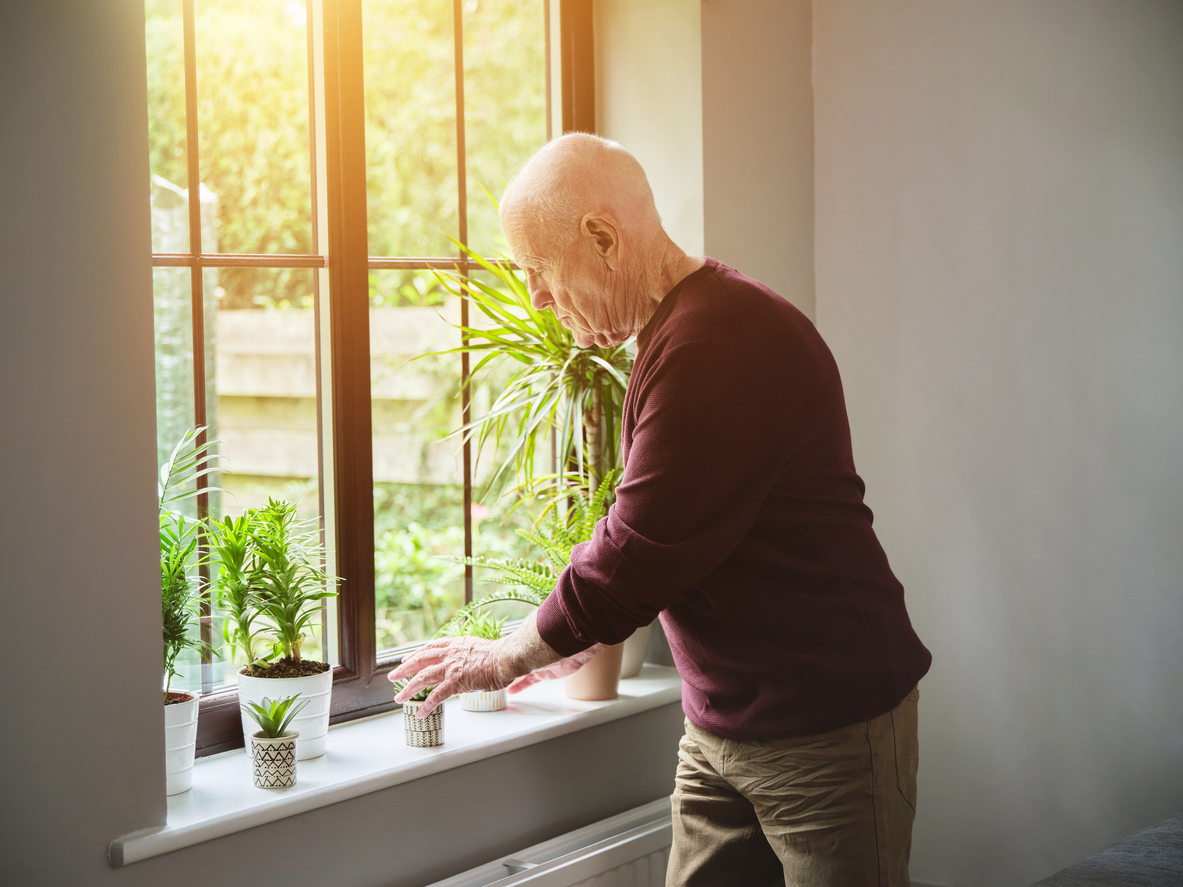
Cilantro is a sun-loving plant that will suffer in inadequate light. For best results, choose a very sunny indoor location, such as an unobstructed south-facing window. Cilantro also grows well under bright grow lights. If you do not have a sunny window, use a broad spectrum LED, HID, or fluorescent grow light to ensure that your plant can properly photosynthesize. Many indoor herb gardens come equipped with lights.
STEP 2: Plant cilantro seeds.
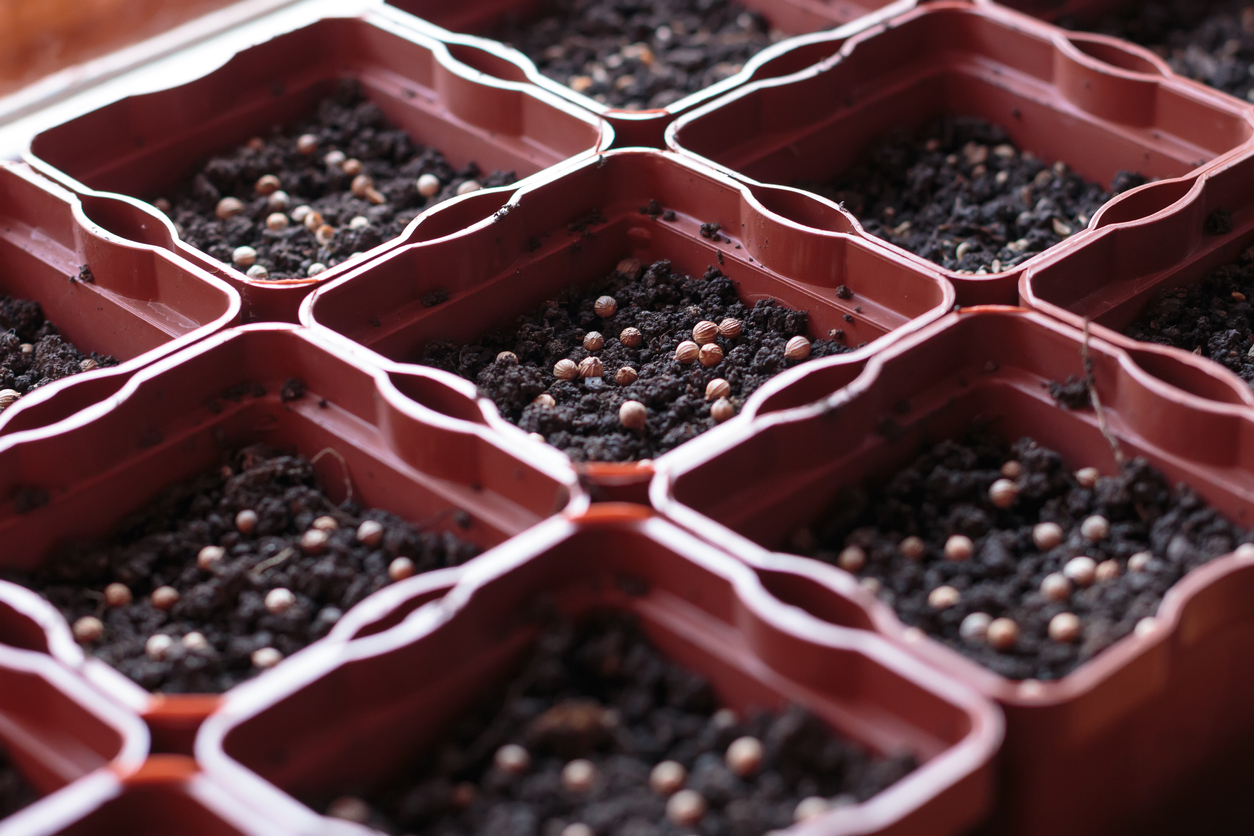
Place the seeds in a small bowl and cover them with cool water. Letting them soak for up to 24 hours prior to planting helps to speed up germination. Drain the seeds just prior to planting.
You can grow cilantro in a pot. Choose one about 8 inches in diameter for one plant or a 12-inch size for a group of three plants. Premoisten the potting mix and fill the container(s) to within 1.5 inches of the pot rim. Gently firm the soil to eliminate any air pockets.
Plant the seeds a 1/4 inch deep. Place three seeds in a 1-inch triangle near the center of each 8-inch pot. Or, if you are using a 12-inch pot, make three 1-inch seed triangles spaced evenly around the center of the pot. Cover lightly with additional soil and lightly mist the soil surface.
When the seedlings produce their second sets of leaves, thin to the strongest plant in each triangle. You can use the thinnings for flavoring as you would full-grown cilantro.
RELATED: Solved! Do Seeds Expire?
STEP 3: Give cilantro consistent water and temperature.
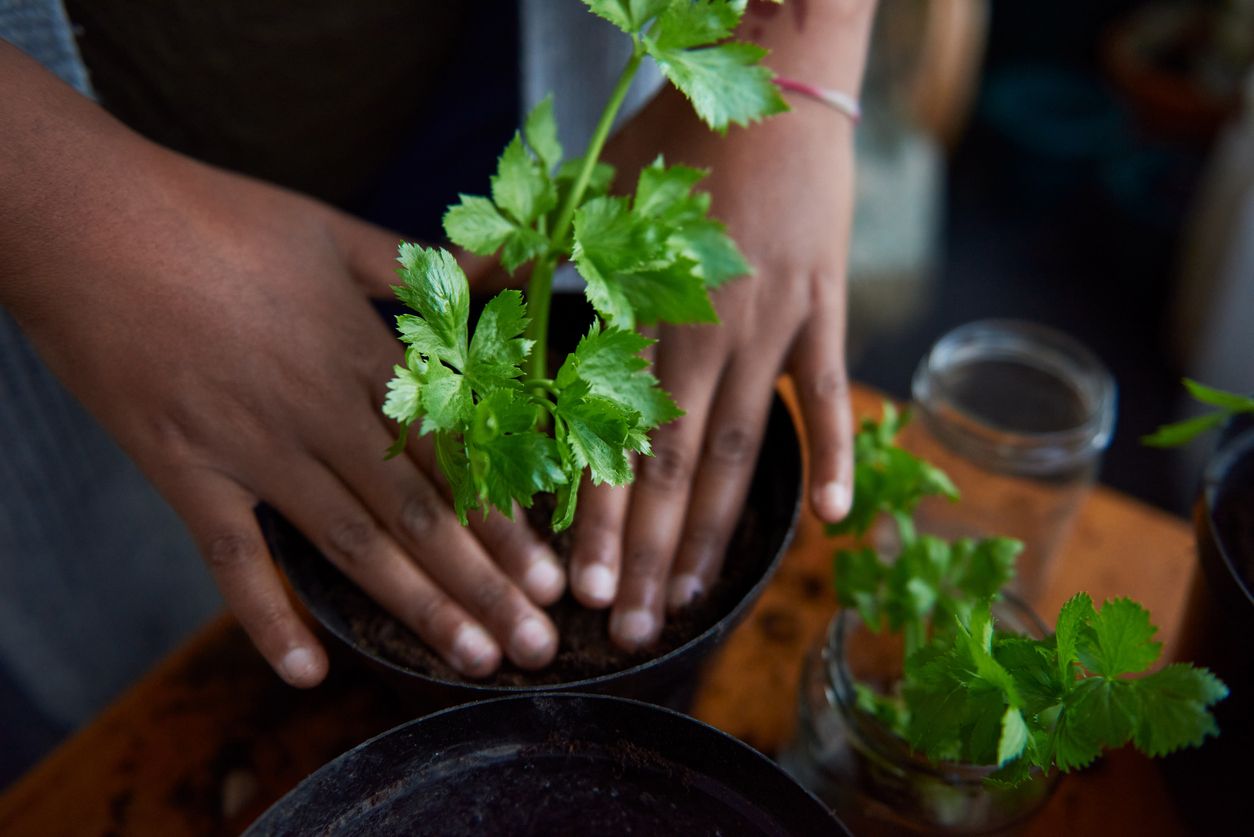
Place your cilantro pots in a sunny, warm area that stays above 70 degrees Fahrenheit until the seeds germinate. After germination, the plants will grow well in temperatures ranging between 50 and 80 degrees. This cool-season herb is very tolerant of lower temperatures, even below freezing, but excessive heat above 85 degrees will cause it to bolt or flower.
Keep the soil evenly moist, but not soggy. Check the water every 2 or 3 days by sticking your finger into the soil. If the soil is moist at the depth of your first knuckle, you need not water. When this upper soil layer is dry, water well and let the excess drain away freely. Do not allow water to stand in the plant saucer.
Humidity is not a critical factor for cilantro. Average indoor humidity is adequate.
STEP 4: Provide the right light and fertilizer.
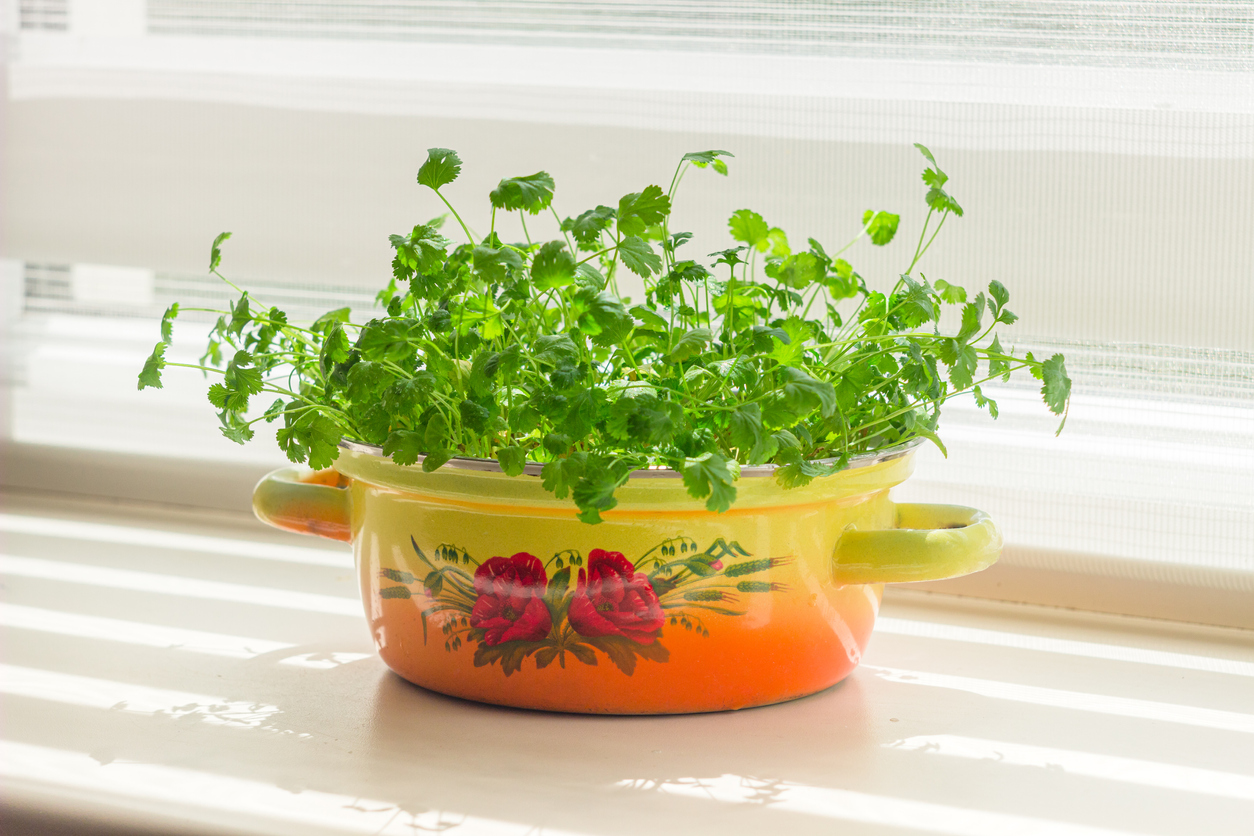
Cilantro plants need adequate sunlight to perform photosynthesis. Four hours of direct sunlight is the bare minimum, but the reduced intensity of fall, winter, and spring sunlight shining through windows may not be enough. If the plant color is pale green instead of deep green, adding grow lights will help.
Place grow lights directly above the foliage, within 2 or 3 inches. Twelve hours of supplemental light per day should be enough to keep the plant healthy.
Feed cilantro regularly with general purpose liquid plant food. Dilute it according to the manufacturer’s directions for weekly feeding. Use the liquid plant food in place of plain water once a week.
RELATED: The Best Indoor Gardens for Flowers and Herbs, Tested
STEP 5: Harvest indoor cilantro.
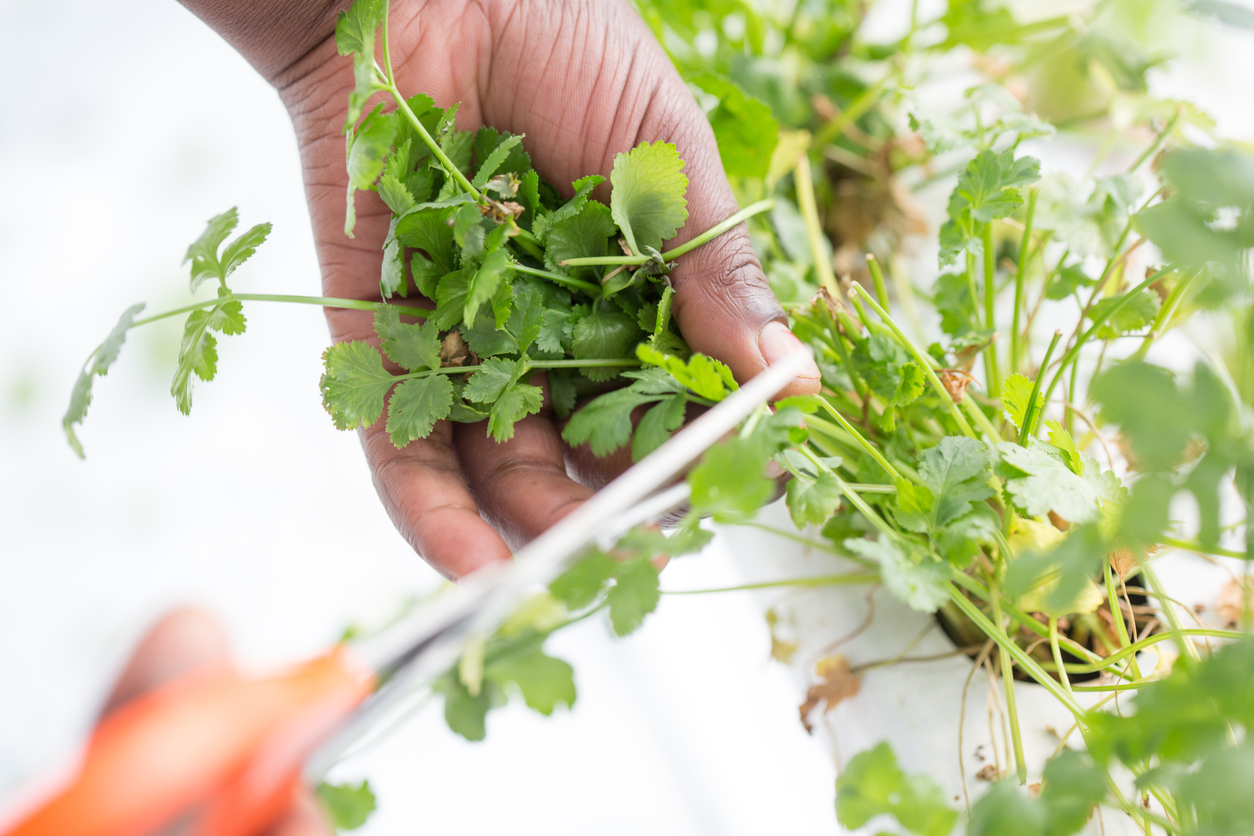
Cilantro can be used any time after germination, but is generally considered “ready to harvest” at 5 to 7 weeks of age. Lightly cut back a few outer leaves at a time when they reach 4 to 6 inches long, or harvest entire plants all at once. The nice thing about growing cilantro indoors is that it does not take up refrigerator space. You can pick exactly the amount needed at the moment and let the rest continue growing.
Once you know how to care for cilantro, growing cilantro indoors is a fun and easy way to exercise your green thumb while enjoying the flavor and fragrance of the fresh herb year round. It only takes a little space in a sunny windowsill, and the plants grow well without excessive coddling. Your consistently comfortable, climate-controlled home will be just what this plant needs to produce a bounty of deliciousness.

